1959 Grinnell alumna was first female engineer at NASA Jet Propulsion Lab
July 17, 2025 — While working at Grinnell’s alumni reunion in 2024, Sophia Ramalli ’27 made a serendipitous discovery.
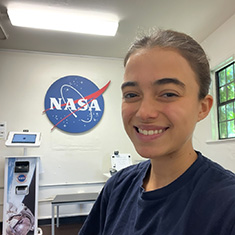 Sophia Ramalli ’27
Sophia Ramalli ’27
“Several of us were taking a break, and I suggested that we do an online search for famous Grinnell alumni to see if they were attending Reunion,” she recalls. “As I scrolled through notable alumni we had heard about, I came across a name without a photo or many other details. It was Dana Tanzer Ulery ’59, whose story fascinated me.”
Ramalli discovered that Ulery was the first female engineer at National Aeronautics and Space Administration (NASA) Jet Propulsion Laboratory. While Ulery wasn’t at Reunion, Ramalli, a physics major, committed to doing everything possible to get connected with this inspirational Grinnellian, including facilitating an invitation for her to speak with Grinnell students.
Ramalli’s dream is to work as an astronaut for NASA, and her path from her home in Brazil to Grinnell was first inspired by her reading about physics assistant professor Shanshan Rodriguez, who had worked at NASA Goddard Space Flight Center from 2010-2014. Ramalli is the founder and president of Grinnell’s first rocket team, which is currently up to 21 members. The team’s projects include launching a high-powered rocket this past spring in Fort Dodge.
When Ramalli saw the Johnson Space Center in Houston last summer was doing its first Open House in six years, she requested funding to attend from the Donald and Winifred Wilson Center for Innovation and Leadership.
“I told them how important it was to talk to people who actually work there,” she says. “Once there, I talked to Ph.D.’s and even met an astronaut. It was really gratifying.”
She also was able to connect with the chief engineer who gave her advice about internships. Because Ramalli isn’t a U.S. citizen, she is not eligible for an internship with NASA, so her way in is through their affiliation with Cal Tech.
Ramalli’s goal is to get a master’s in mechanical engineering. She’s doing research at Stanford this summer where she is helping work on a levitating robot that will be able to go to Mars and collect samples without damaging the soil. The research focuses on developing a 3D printer generated robot arm that will be able to grip onto objects.
Blasting off with early lunar and planetary missions
Unlike Ramalli, Ulery did not know what she wanted to do after college. As she explains, the expectation for women in the 1950s was to marry, have children, and maybe work in a traditional career such as teaching or nursing. When she attended Grinnell, there were no female physics professors or majors to inspire her. She was one of only three female math majors, and all the faculty in STEM were male.
Still, Ulery thrived at Grinnell; not only did she double major in math and English, but she also minored in social studies and got an Iowa High School Teaching Certificate.
Upon graduation, Ulery was offered a graduate fellowship in math at the University of Rochester, but she says, “I turned it down because the boy I wanted to marry, Harris Ulery ’59, wanted to go to Cal Tech.” With her teacher training, Ulery started as a middle school math teacher, but quickly realized that was not the career she desired.
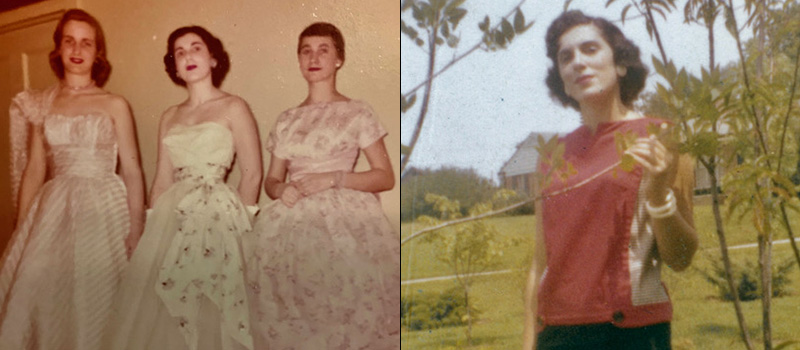 Left image: Dana Ulery ’59, middle, is pictured before the 1957 spring prom at Grinnell College. Right image: Ulery poses in a 1960 photo.
Left image: Dana Ulery ’59, middle, is pictured before the 1957 spring prom at Grinnell College. Right image: Ulery poses in a 1960 photo.
Demoralized by the handful of job interviews she had where potential employers were more interested in her family plans than her job-related skills, Ulery soon took matters into her own hands.
“I walked the halls of CalTech until I found an open door,” she explains. “Then I just went in and started talking.” Surprisingly, the men she spoke with were receptive, and one gave her a contact at NASA’s Jet Propulsion Lab (JPL), to whom she soon paid a visit and was granted an interview. The Lab helped pave the way for the Apollo missions, including the moon landing in 1969.
Ulery’s perseverance and knowledge landed her the first woman engineer distinction at JPL, although it would take six more years for them to hire another woman. She loved her work with the Deep Space Network focused on precision tracking and analysis of Goldstone antennas, which are used on lunar and planetary missions.
While working at JPL, Ulery had her first child, and, in 1964, her husband accepted a job in Delaware with the DuPont Company.
“When I had to give up my job at JPL, it was very difficult,” she recalls. “At that time, it went without question that a husband’s career was the primary one of the family.”
From teaching to engineering management to intelligent systems
After their move, Ulery worked briefly but was soon pregnant with their second child. “When you were three months pregnant, they wouldn’t let you stay in a job,” she recalls.
Four years after their daughter was born, Ulery started graduate school at the University of Delaware where she earned her M.S. and Ph.D. in computer science. She continued to raise her children while going to school and later holding a series of other jobs unique for a woman at that time. “There were a lot of times I’ve had to start over, but I’ve been driven to do just that, and something always opens up that allows me to follow that path,” she says.
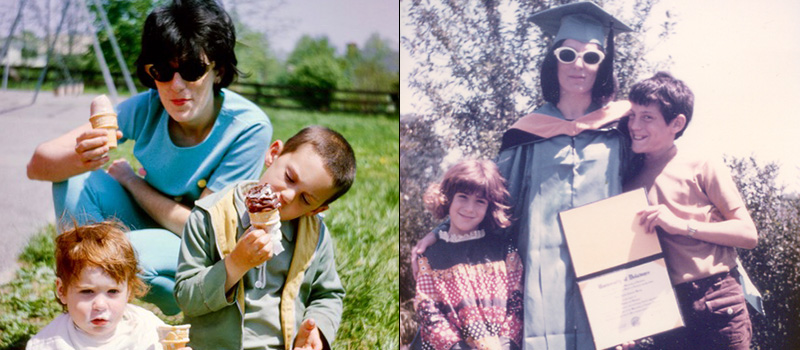 Left photo: In this 1967 picture, Ulery enjoys an ice cream outing with her children. Right photo: Ulery poses with her kids after receiving her master’s degree from the University of Delaware in 1972.
Left photo: In this 1967 picture, Ulery enjoys an ice cream outing with her children. Right photo: Ulery poses with her kids after receiving her master’s degree from the University of Delaware in 1972.
Starting as a lecturer at Delaware’s new Freshman Honors College, she then worked in Egypt where her advisor was on sabbatical. Ulery taught university computer science courses in addition to authoring two college textbooks in computer science, since that country did not yet have any such resources in this field.
Upon returning to the U.S., Ulery was offered a contract position with DuPoint without any long-term benefits – once again different from what they would have offered a man. Serendipity won out again, when a neighbor who also worked for DuPont, told her he could offer her something better. This offer leaked back to her boss who soon remedied the situation by making Ulery a full-time employee.
A year later, in 1978, the Ulerys divorced and two years later, she married a DuPont colleague, William Fellner. Ulery’s job at DuPont consisted of developing large-scale product quality software applications designed to implement proprietary technology. She excelled at her job moving from technical roles into leadership positions and becoming one of the first women promoted to engineering management.
In 1994, as the company started outsourcing, Ulery retired from DuPont. Although age 56, she decided to seek another position. This time she had more connections, and she joined the U.S. Army Research Laboratory (ARL) as a senior research scientist, then was promoted to chief scientist for computational and information sciences.
“They were doing some innovative and interesting things,” Ulery says. “One of the best things that happened is my role as ARL director of the Center for Excellence at Morgan State University.” She led the Center jointly with Dean Eugene DeLoatch, who is credited for developing more Black talent in engineering than anyone else. “To get to know this man was a reward in itself,” she says.
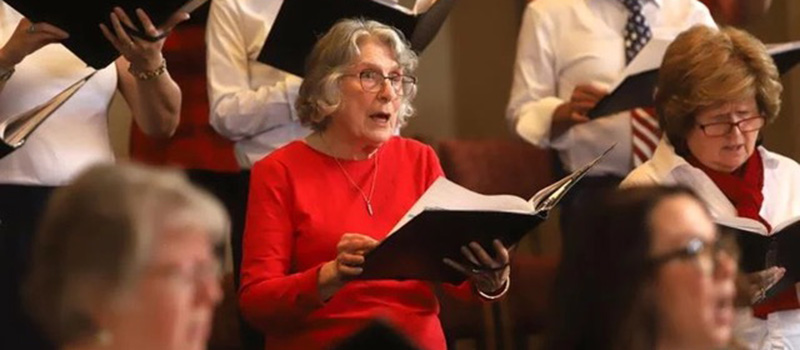 Ulery sings with the New Ark Chorale during a Memorial Day concert in 2023.
Ulery sings with the New Ark Chorale during a Memorial Day concert in 2023.
Retired since 2005, Ulery continues to explore the path of a lifelong learner through the Osher Lifelong Learning Institute at the University of Delaware. “One of my significant experiences at Grinnell was being involved with the choir,” she recalls. Despite never having directed a choir before, she started and directs the Institute’s Chamber Choir, and also enjoys singing with a premier auditioned community choir. Ulery’s husband is a musician and singer, so together, they also perform in various small ensembles.
In 2017, Ulery was awarded the prestigious Marquis Who’s Who Lifetime Achievement Award for significant contributions over her career.
Inspiration to Grinnell students, faculty
Just like Ulery, Ramalli is pushing the boundaries as she traverses her Grinnell years and looks toward her future. She was so inspired by Ulery’s story, that she wanted other Grinnellians to know of her achievements. To that end, she spent months contacting various Grinnell College departments with ideas of how to make this happen.
This February, Ramalli’s efforts paid off. Ulery was invited to speak to Grinnell students as part of the Physics Seminar Series. During the school year, the department hosts weekly seminars on topics related to physics and astronomy. Ulery couldn’t be there in person, so she spoke to students over Zoom. “They asked questions that made me think,” Ulery says.
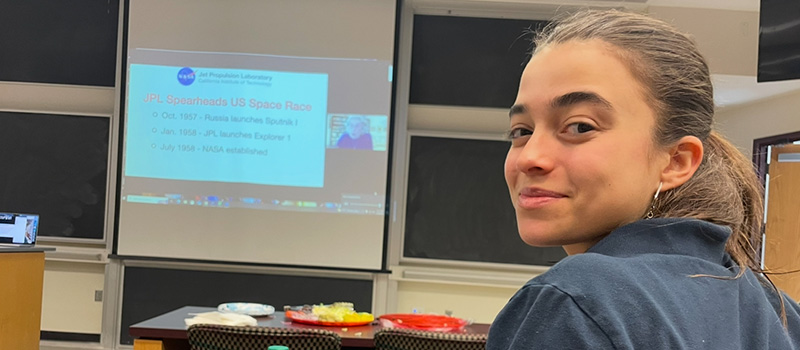 Ramalli watches as Ulery makes a Zoom presentation on screen during a Physics Seminar Series event in February.
Ramalli watches as Ulery makes a Zoom presentation on screen during a Physics Seminar Series event in February.
“Of course, I wanted to know about her NASA work,” Ramalli says. “She said some surprising things. She was the only woman working with 15 white men, but they were actually really nice. She explained that you have to get to know who you are talking to, so that there will be some people who will help you on your journey forward.”
Charlotte Christensen, associate professor of physics, first learned about Ulery when Ramalli emailed the department to try to arrange a talk.
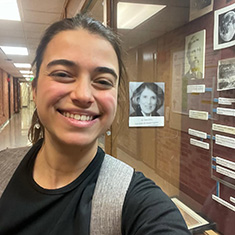 Ramalli with a photo of
Ramalli with a photo of
Ulery in the Noyce Science
Center.
“I was struck by Dr. Ulery’s remarkable biography and impressed that Sophia had connected with her,” Christensen says. “Sophia took a huge amount of initiative in contacting different departments to encourage us to invite Dr. Ulery. She also helped organize the student Q&A session, including finding snippets from Grinnell yearbooks during Dr. Ulery’s time on campus.”
Christensen says Ulery’s talk was inspiring,
“I was fascinated by Dr. Ulery’s stories of creative problem solving during the early years of NASA JPL and what it was like to be the only woman in the room. What will stick with me most was how Dr. Ulery spoke about mentorship – both finding it in unexpected places and how she has been able to provide it to the next generation of engineers.”
While Ulery is the first to admit that this was not an easy path, she is thankful for the male mentors and supervisors who bucked the system, thereby creating opportunities for her. She also credits her liberal arts foundation for providing the necessary critical thinking, creative problem solving, and effective communications skills that were all critical for her success.
“My education from Grinnell is well characterized by the Albert Einstein quote, ‘True education is about teaching how to think, not what to think,’” Ulery says. “My Grinnell experiences reinforced my sense of self-worth and my strong desire to have a positive effect on society.”
—by Melanie Drake ’92
For your information:
Ramalli placed a photo of Ulery in the display case in the physics wing of Noyce Science Center to help educate future Grinnellians about Ulery’s work. The photo can be viewed when the building is open.
To read more alumni news, check out our news archive and like the Alumni & Friends Facebook page.